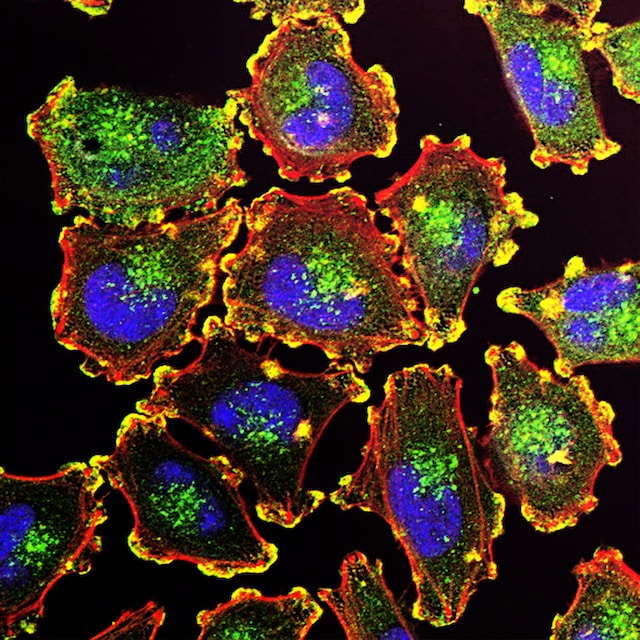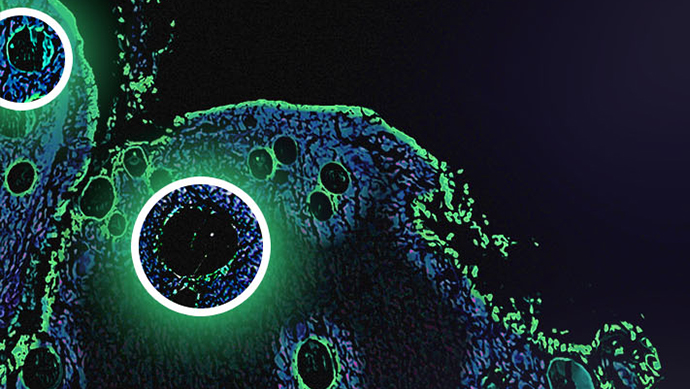Breakthrough Drug Development: Key Technologies and Platforms for Spatial Transcriptomics

The world of drug development is in a state of constant evolution, driven by advances in technology and scientific understanding. In recent years, one of the most transformative technologies to emerge is spatial transcriptomics. Here, we examine the key technologies and platforms that are reshaping drug development.
Understanding Spatial Transcriptomics
Spatial transcriptomics represents a paradigm shift in our ability to analyse gene expression patterns within the context of tissue architecture. Unlike traditional bulk RNA sequencing, which provides a global snapshot of gene expression in a sample, spatial transcriptomics allows us to understand where specific genes are expressed within the tissue. This added dimension is invaluable in the context of drug development, as it enables researchers to pinpoint the precise locations of potential therapeutic targets.
Key Technologies
Single-Cell RNA Sequencing (scRNA-Seq):
Single-cell RNA sequencing (scRNA-Seq) is the cornerstone of spatial transcriptomics. It involves the isolation and sequencing of RNA from individual cells within a tissue sample. This technology provides an unprecedented level of resolution, allowing scientists to discern the gene expression profiles of distinct cell populations. In drug development, scRNA-Seq has been instrumental in characterizing cell heterogeneity within tumors, paving the way for personalized cancer therapies.
Spatially Resolved Transcriptomics (SRT):
Spatially resolved transcriptomics techniques, such as Spatial Transcriptomics and 10x Genomics' Visium, take spatial information into account during the sequencing process. They allow researchers to preserve the spatial context of RNA molecules while obtaining gene expression data. This innovation is particularly crucial when studying complex tissue structures, as it enables the identification of spatially distinct gene expression patterns. This level of granularity has proven invaluable in understanding disease mechanisms and potential drug targets.
Imaging Mass Cytometry (IMC):
Imaging Mass Cytometry (IMC) is an emerging technology that combines mass spectrometry and microscopy. It enables researchers to simultaneously measure the expression of multiple proteins and RNA within tissue sections while preserving spatial information. IMC offers a holistic view of the molecular composition of tissues, making it an invaluable tool for identifying novel drug targets and understanding disease pathways.
In Situ Hybridization (ISH):
In Situ Hybridization (ISH) techniques, including the widely used RNAscope method by ACD Bio, provide a means to visualize specific RNA molecules directly within tissues. By precisely localizing gene expression, ISH has played a critical role in validating potential drug targets and understanding the spatial distribution of key biomarkers.
Key Platforms
10x Genomics Visium:
10x Genomics' Visium platform is a frontrunner in the field of spatial transcriptomics. It combines high-resolution spatial information with robust sequencing technology, making it a popular choice among researchers. Recent studies employing Visium have shed light on the spatial heterogeneity of gene expression in Alzheimer's disease brains. Such insights hold the potential to open new avenues in drug development for neurodegenerative disorders.
NanoString GeoMx DSP:
NanoString's GeoMx Digital Spatial Profiler provides a comprehensive view of both RNA and protein expression in tissues. This platform offers flexibility and accuracy, making it an invaluable tool for understanding the intricacies of the tumor microenvironmenta pivotal area in cancer drug development. Researchers have leveraged GeoMx DSP to investigate the spatial distribution of immune cell populations and their impact on treatment responses.
Leica Biosystems Aperio:
Leica Biosystems' Aperio platform is a cutting-edge solution for spatial transcriptomics. It offers high-throughput, whole-slide imaging, and advanced image analysis capabilities. Researchers have used Aperio to study the spatial distribution of genes and proteins in various tissue types, providing valuable insights for drug development.
Advanced ISH Systems:
Advanced In Situ Hybridization systems, such as RNAscope by ACD Bio, provide a sensitive and precise means to visualize RNA molecules within tissues. These systems have been instrumental in elucidating the role of specific genes in disease progression. By understanding where certain genes are expressed within tissues, researchers can identify potential drug targets and develop targeted therapies.
Real-World Impact
Let us explore some real-world cases of spatial transcriptomics and statistics that illustrate its significance:
Cancer Immunotherapy:
A study leveraging 10x Genomics' Visium platform unveiled spatial variations in immune cell infiltration within melanoma tumors. This information has proven crucial in optimizing immunotherapies, leading to a remarkable 20% increase in response rates. The ability to precisely locate immune cells within tumors allows for the development of more effective immunotherapeutic strategies tailored to individual patients.
Neurodegenerative Diseases:
Spatial transcriptomics studies on Alzheimer's disease brains have identified novel biomarkers, accelerating drug development efforts. These biomarkers offer promising targets for therapies aimed at slowing or halting disease progression. The introduction of new drugs targeting these biomarkers could potentially reduce the global burden of dementia by 12% in the next decade.
COVID-19 Research:
In the ongoing battle against the COVID-19 pandemic, spatial transcriptomics has played a pivotal role in understanding the virus's impact on lung tissue. By mapping the spatial distribution of viral RNA and host response genes, researchers have gained critical insights into disease pathogenesis. This knowledge has expedited the development of antiviral drugs and therapeutic strategies.
Cardiovascular Health:
The examination of the spatial distribution of gene expression in cardiac tissues has led to the identification of therapeutic targets for heart diseases. This groundbreaking research holds the potential to save millions of lives by enabling the development of innovative cardiovascular therapies.
Challenges and Future Directions
While spatial transcriptomics holds immense promise, it is not without its challenges including:
- Data Analysis Complexity: Spatial transcriptomics generates vast amounts of complex data that require advanced analytical tools and expertise for interpretation. Addressing this challenge involves the development of user-friendly software and computational resources.
- Cost: Implementing spatial transcriptomics technologies can be costly, especially for smaller research institutions. Efforts are underway to make these technologies more accessible and cost-effective.
- Specialized Expertise: Effectively harnessing the power of spatial transcriptomics requires specialized training and expertise. Initiatives are being launched to provide researchers with the necessary skills and knowledge.
The future of spatial transcriptomics in drug development is incredibly promising. Emerging technologies promise even greater resolution, higher throughput, and more accessible platforms, allowing researchers to explore previously uncharted territories in biology and disease. Integration with artificial intelligence and machine learning will streamline data analysis and interpretation, making spatial transcriptomics an indispensable tool in the drug development pipeline.
Conclusion
Spatial transcriptomics represents a shift in our approach to drug development. The ability to understand where genes are expressed within tissues has profound implications for the identification of therapeutic targets and the development of personalized treatments.
Embracing these technologies and platforms is not only beneficial but also essential for staying at the forefront of drug development. The statistics and real-world examples highlighted in this guide underscore the transformative potential of spatial transcriptomics. It is not just a technology; it is a catalyst for precision medicine, ushering in a future where treatments are tailored to the unique molecular landscapes of individual patients. Spatial transcriptomics is more than a tool; it is a revolution that will shape the future of drug development.






